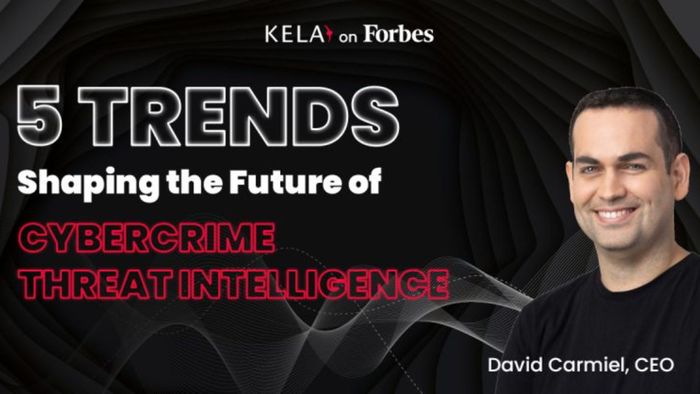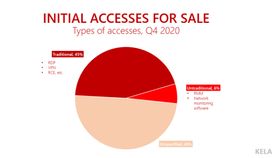5 Trends Shaping The Future Of Cybercrime Threat Intelligence
Updated December 19, 2022.

Cyber threats are evolving faster than ever, and the cybercrime underground has become an organized cybercrime ecosystem. In 2021, ransomware activity increased significantly. The number of attacked companies found in our sources increased almost twofold—from 1,460 to 2,860 victims. To effectively combat these threats, it’s essential for cybersecurity professionals to stay up to date on the latest trends in cybercrime.
In this article, we’ll look at five trends shaping the future of cybercrime threat intelligence and how organizations can protect themselves. We’ll also discuss how these trends are impacting the way businesses need to protect themselves against attacks.
Cyberattacks are on the rise and becoming more expensive.
According to some estimations, nearly two-thirds of companies say they have been the victim of a cyberattack in the past year. The economic impact of these attacks is significant, costing the global economy about $445 billion every year, and it will only get worse.
This trend has highlighted the need for companies to protect data and ensure business continuity in today’s increasingly connected world. Security teams need access to information they can use to identify, assess and respond to threats, and companies must better understand the evolving landscape of cyber threats, identify vulnerabilities in their systems and develop effective mitigation strategies.
Cybercriminals are becoming more collaborative and specialized.
These days, almost all cybercrime is carried out by organized groups. The solo hacker is essentially a thing of the past. Even script kiddies operate in small groups. The largest and most sophisticated attacks require the skills of dozens or even hundreds of attackers. The most prolific cybercriminals have become segmented by expertise and collaborate with other hackers or criminal groups.
These groups specialize in writing viruses, stealing credit card numbers, mounting DDoS attacks or breaking into corporate networks. By working together, they can overcome the skills and competencies that each individual lacks. This collaboration allows them to carry out far more damaging attacks than any single hacker could ever hope to achieve.
Over the past few years, these groups are becoming increasingly bold and sophisticated. They operate just like businesses. Knowing what these criminal enterprises are up to, what kinds of attacks they tend to use and what types of companies they typically target can help organizations understand their real cybercrime attack surface and risk of attack.
Botnets and automated malware deployment tools are becoming more sophisticated.
As the Internet of Things expands, so do the opportunities for attackers. More and more devices are connected to the internet, providing new entry points for malicious actors. And as these devices become increasingly sophisticated, so do the tools and techniques used by attackers.
Over the last few years, there has been an increase in the use of bots and automated malware deployment tools. These easy-to-buy and easy-to-use tools lower the skill level barrier to entry for cybercriminals. As they become more sophisticated, they’re becoming more difficult to detect and defend against.
There has also been an increase in the use of encrypted communications by attackers. This makes it difficult for security teams to monitor and track attackers. As encryption becomes more widespread, it’s becoming more difficult to defend against attacks that use it.
These tendencies underscore the need for better threat intelligence across the board, not just for critical infrastructure providers. As the sophistication of attacks increases, all businesses must ensure that their threat intelligence sources provide timely, accurate and relevant security data.
Collaboration between state-sponsored actors and cybercriminals is on the rise.
Increased collaboration between nation-state threat actors and cybercriminals is a dangerous trend with far-reaching implications. On the one hand, nation-states have access to a wealth of resources and talent that criminals can use to carry out sophisticated cyberattacks. On the other hand, cybercriminals are motivated by profit, not politics, and are therefore more likely to be willing to sell their skills to the highest bidder.
The combination of these two factors makes it inevitable that we will see more and more cases of highly sophisticated cybercrime in the future. This is a trend that businesses need to be very vigilant about, as it has the potential to circumvent the security processes of organizations that are caught unaware.
Organizations of all sizes are in danger—especially SMBs.
Malicious actors aren’t just targeting large corporations, which is often what we see make the news. They’re targeting SMBs (small-medium businesses) as well, which they may deem an easier target because SMBs often don’t have robust tools for threat detection and to guard against attacks.
In 2021, 60% of SMBs were victims of at least one cyberattack—unfortunately unsurprising, as only 18% of SMBs are implementing basic security measures, according to the same report.
One of the solutions is for small-medium business owners to increase their prioritization of security, as their size makes them more vulnerable to attack. This means investing in tools that can help keep their organization, customers, and data safe, and viewing security as a necessary business expense.
How Businesses Can Protect Themselves Against Cybercrime Threats
Cyber threats are continuing to emerge from the cybercrime underground while attacks become more sophisticated. Your organization is at risk, and you need an efficient way of knowing which alerts deserve your attention most urgently so that you can take protective action immediately.
The future of cybersecurity is coming quickly, and if organizations want to succeed in this future, it is important to begin making changes now. The world is becoming increasingly interconnected, and as more devices and systems are connected to the internet, the potential for cyberattacks grows. At the same time, cybercriminals are becoming more sophisticated and organized, making it harder for individuals and businesses to protect themselves.
The article was published on Forbes.com on Dec, 19th, 2022





